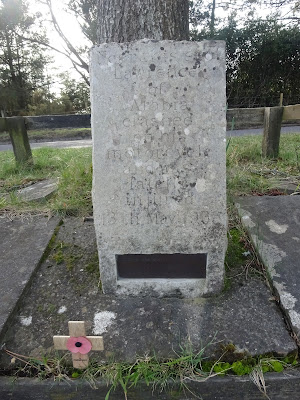 |
| TE Lawrence - Lawrence of Arabia |
 |
| TE Lawrence - Lawrence of Arabia |
Thomas Edward Lawrence was known as Lawrence of Arabia for his expolits in the Middle East during World War One. He was involved in the Arab Revolt (1916–1918) and the Sinai and Palestine Campaign (1915–1918), against the Ottoman Empire.
He studied history at Jesus College, Oxford, from 1907 to 1910, then worked as an archaeologist for the British Museum, chiefly at Carchemish in Ottoman Syria, upto the start of the First World War.
 |
| TE Lawrence (right) Carchemish c.1912 |
Soon after the outbreak of war in August 1914, Lawrence volunteered for the British Army and with his knowledge of the Middle East he was posted to the Arab Bureau intelligence unit in Egypt.
In June 1916, an Arab Revolt began when Sharif Hussein of Mecca, the Hashemite tribe leader, raised his flag to signal the start of the uprising. TE Lawrence was sent in October 1916 to work with the Arab Northern Army in the Hejaz, and established a good relationship with it's leader Feisal ibn Hussein.
The Northern Army's would exploit along the Red Sea Coast capturing the ports of Jeddah, Rabigh, Yabu, Wejh and Aqaba, as well as conducting attacks on the Hejaz railway to disrupt supplies and potential reinforcements to the Turkish garrison in Medina. The operations supported the two Arab Armies fighting the Turks in Medina.
 |
| TE Lawrence Aqaba 1917 |
Lawrence continued his guerrilla operations with the Arab Northern Army, re-reinforced by the Camel Corps, a flight of aircraft, Rolls Royce Armoured cars and 10 (Motor Section) Royal Field Artillery.
%20RFA.jpg) |
| 10 (Motor Section) Royal Field Artillery |
On the 30th September, a contingent from the Arab Army and troops from the Australian Light Horse of the Egyptian Expeditionary Force entered Damascus. On 1st October TE Lawrence of Arabia rode into Damascus in a Rolls Royce.
 |
| TE Lawrence rides into Damascus in a Rolls Royce. |
During his time with the Arabs Lawerence had promised that the British Government would give the Arabs independence on cessation of hostilities and establish an Arab nation. The British Government however had been duplicitous in their dealings with the Arabs. In January 1916 the British and French Governments had agreed the Sykes-Pico agreement which split the Middle East into British and French spheres of influence.
Lawrence returned to the United Kingdom a full colonel, and sought to convince the British government that the promise he had made to the Arabs of independence, was in Britains interest. Immediately after the war, he worked for the Foreign Office, attending the Paris Peace Conference between January and May as a member of Faisal's delegation.
 |
| Paris Peace Conference 1919 King Fisal's Delegation TE Lawrence second from right |
Disilusioned by the British Goverment's treatment of the Arabs, in 1922, he retreated from public life, and enilsted into the Royal Air Force as an ordinarly airman under a false name. He was later discharded, joined the Royal Tank Corps and petitioned to be transferred to the Royal Air Force which was granted, seving under the name of TE Shaw. In 1926 he wrote Seven Pillars of Wisdom, an accout of his exploits during the Arab Revolt.
 |
| TE Lawrence Seven Pillars of Wisdom |
On 13 May 1935, Lawrence was fatally injured in an accident on his Brough Superior SS100 motorcycle in Dorset close to his cottage Clouds Hill, near Wareham.
 |
| Aircraftsman Shaw on Brough Superior SS100 |
 |
| Clouds Hill along which Lawrence was travelling |
 |
| TE Lawrence Crash Site and Memorial |
 |
| TE Lawrence Crash Site Memorial |








.jpg)



















